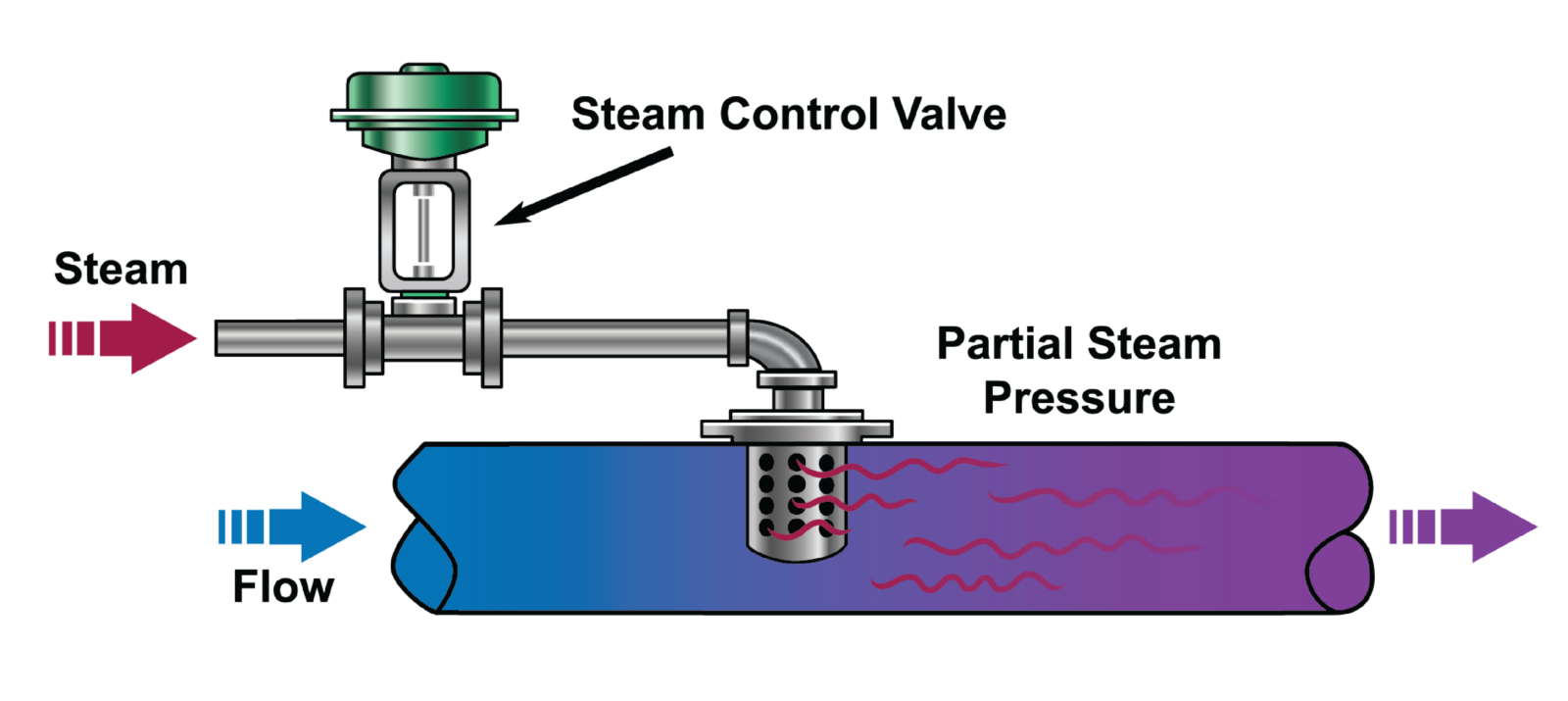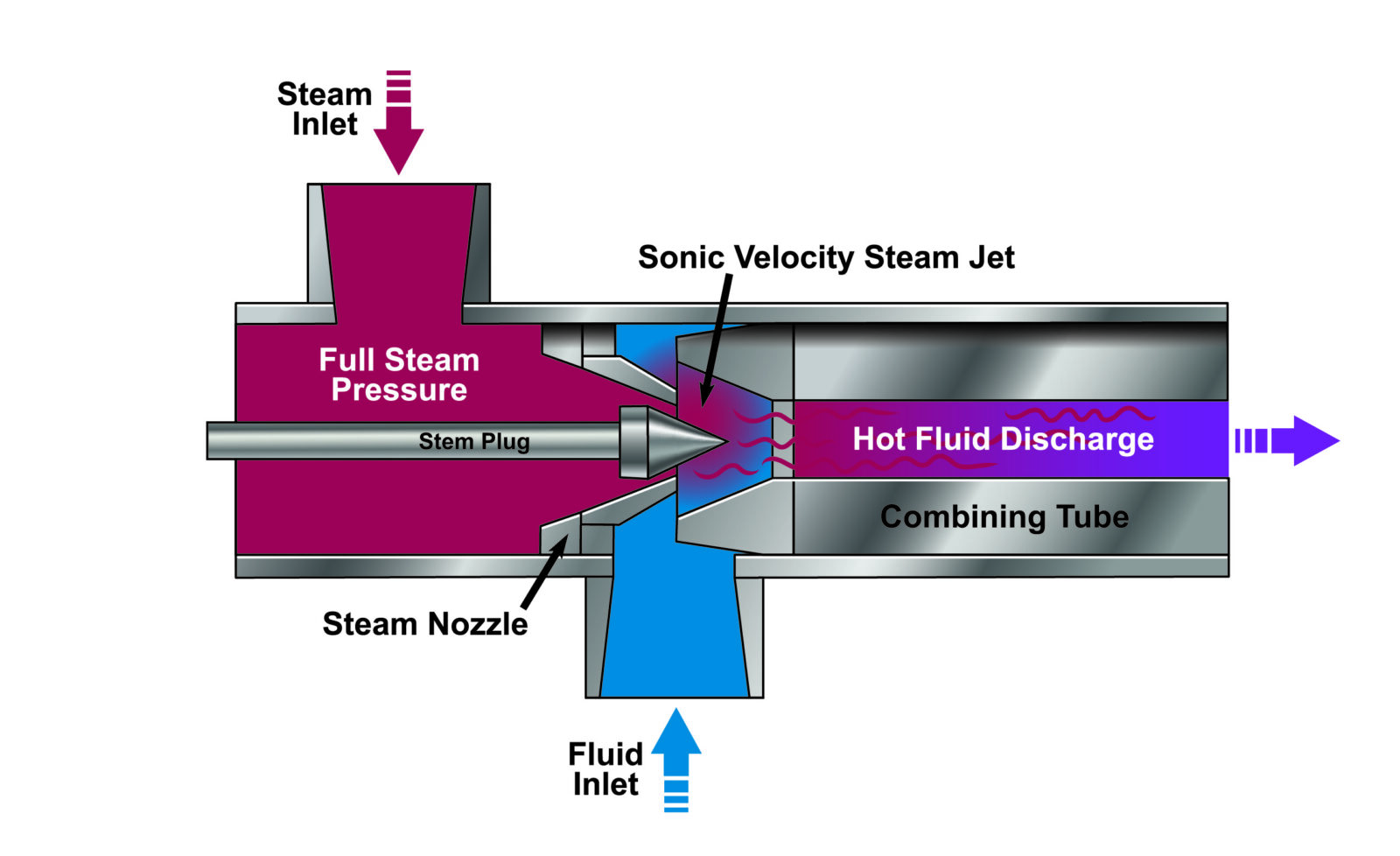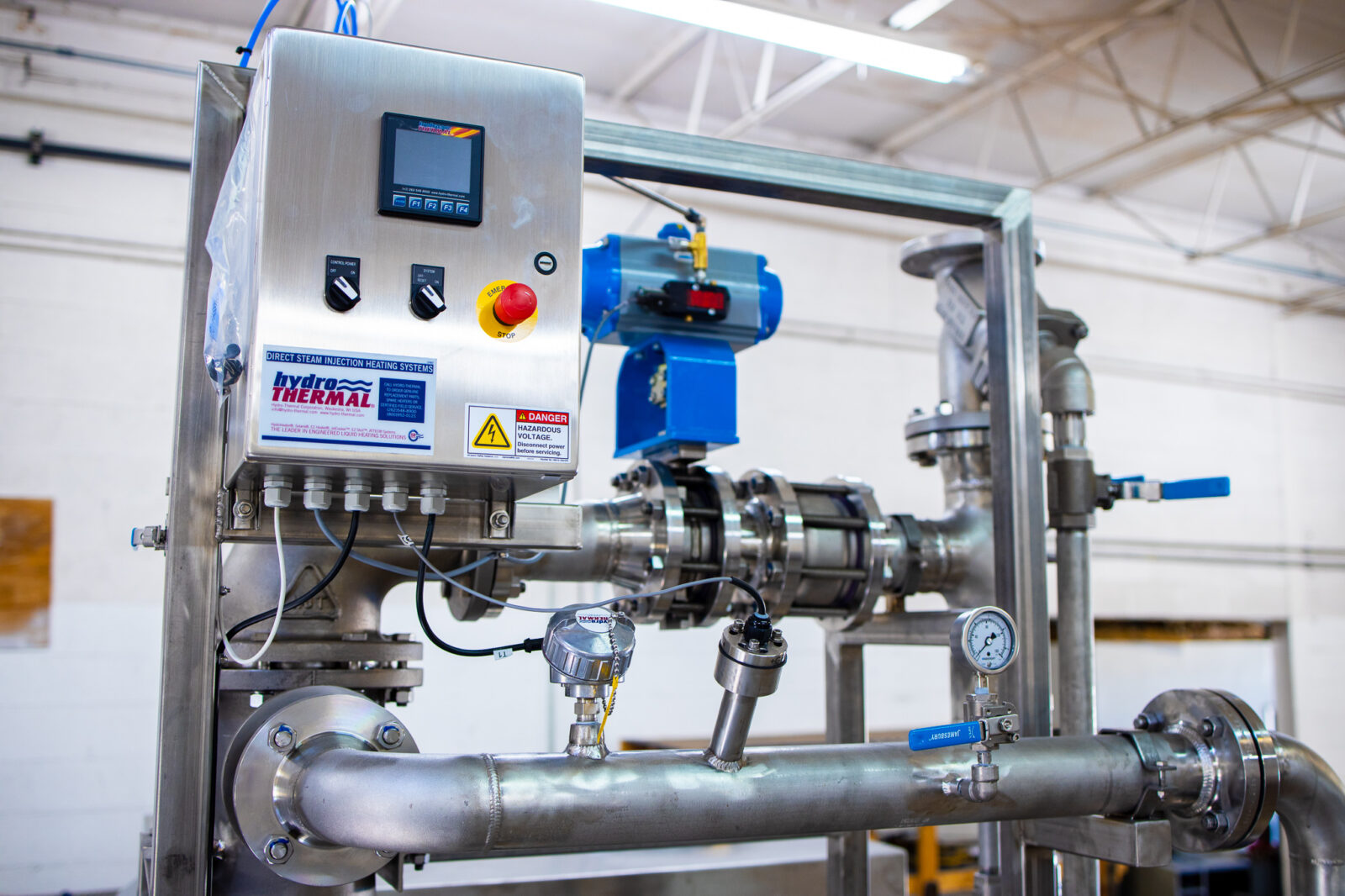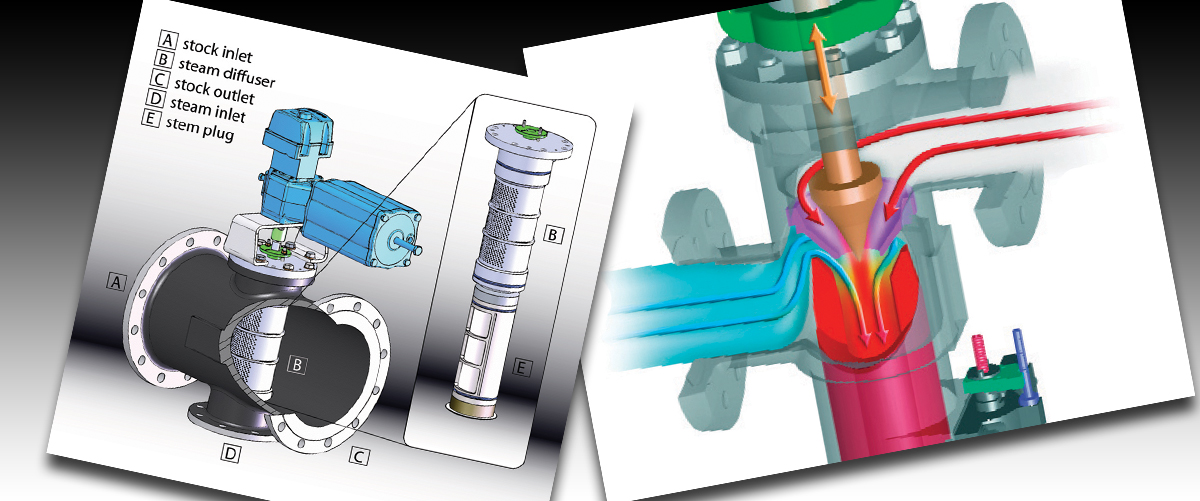How Does Direct Steam Injection Work?
Direct Steam Injection works by directly injecting steam into a process fluid to obtain more rapid heat transfer, resulting in more efficient energy usage than indirect heat exchangers. This efficient process of heating is caused by our direct steam injection Hydroheaters’ ability to control both steam flow and mixing turbulence by using a modulating stem plug and nozzle or diffuser assembly in the heater. This precise mixing of a measured amount of high-velocity steam directly with your liquid or slurry provides an instantaneous heat transfer from steam to the fluid. This heat transfer method allows for 100% thermal efficiency and energy savings of 20-25%.
A precisely engineered, variable-area steam nozzle or diffuser meters the flow at the point of injection and contact with the fluid. The large pressure drop from full steam pressure to the process fluid pressure ensures high-velocity choked steam flow and instantaneous mixing of the two streams. When steam flow is choked, its velocity at the nozzle or diffuser exit is constant regardless of the total mass flow injected. The internally modulated Hydro-Thermal heaters control the amount of injection area (cross-sectional area of the nozzle or diffuser opening) to regulate the heat load precisely—the constant steam velocity results in consistent and stable operation across the full range of operations.
Hydro-Thermal’s patented direct steam injection heaters use direct heat exchange to transfer 100% of the steam’s energy for heating liquids and slurries over a wide range of viscosities and solid contents to precise temperatures. A Hydroheater’s internal modulation assures exacting steam control and rapid temperature management and produces predictable results. Each Hydro-Thermal heater has an internal trim custom-designed for each customer’s specific needs and requirements.
Don’t believe us? Head over to our Energy Savings Calculator to get an accurate estimate of how much you can be saving in operating costs.
What is Direct Steam Injection?
As the backbone of our products at Hydro-Thermal, direct steam injection (DSI) technology is at the core of what makes our products so successful. Mixing steam directly with process fluids or slurries is ideal for heating liquids over a wide range of viscosities and solid contents to precise temperatures, while also transferring 100% of steam’s latent and sensible energy.
DSI reaches across all major industries, including Food & Beverage, Ethanol Starch & Sweeteners, and Industrial.
Visit YouTubeExternal vs. Internal Modulation
Externally or Internally modulated direct steam injection refers to how the mass flow of steam injected into the process fluid is controlled.
External modulation uses a steam control valve on the supply line to vary the pressure of the steam at the point of injection, varying the pressure changes the steam density and velocity through the nozzle to control the amount of heating. Regulating steam pressure to control heating can result in unstable operation, hammering, and vibration when high or low steam flowrates are required. At low steam flow, i.e., trim heating, the differential between steam pressure and the process can be very small, and a slight fluctuation in either pressure can cause an upset. Alternatively, at high steam flow requirements, i.e., max heating at startup, the orifice or nozzle size will allow more steam than can be condensed, and steam hammer occurs.
DSI controls the injection area rather than steam velocity and density to regulate the amount of heating. An internally modulated heater operates at higher steam velocities compared to external modulation. This higher velocity produces improved, often rapid mixing and nearly instantaneous condensation of the steam into the process fluid.

External modulation

Internal modulation
Get In Touch With Hydro-Thermal
Contact us to learn more or request a quote and we will get back to you shortly.

Direct vs. Indirect Heating
There are two basic types of heat exchangers used to transfer heat between process fluids — direct heat exchange and indirect. Indirect heating is most commonly seen in the form of plate & frame or shell & tube heat exchangers. Any process that does not allow direct mixing of steam and fluid is indirect heating. Heat exchangers transfer heat through a membrane or solid wall. This results in only ~ 83% of the heat energy transferred to the process fluid. In contrast, the remaining energy is discharged in the condensate formed from the steam.
On the other hand, direct heating uses 100% of the steam’s heat energy by adding steam directly to the process fluid.
The benefits of using direct contact heating vs. indirect include:
- Energy savings of 25% or more
- Precise and instantaneous temperature control is possible to within ±1°F
- Reduced footprint for direct steam injection system
- Reduces maintenance via self-cleaning and elimination of a condensate return system
Additional benefits:
- Rapid and uniform heating—important in starches and food product
- Can heat highly viscous fluid
- Handles fluids that are difficult to heat—avoids “bake-on”; abrasive slurries
- Eliminates plugging and fouling of the heat transfer surface
- Rapid response time
Understanding Heating Systems: Direct Steam Injection & Heat Exchangers
Various methods efficiently transfer thermal energy in industrial heating. Heat exchangers, for example, use a surface to transfer heat between two fluids without direct contact. However, direct steam injection (DSI) is a powerful alternative in several forms, each with varying complexity and temperature control.


